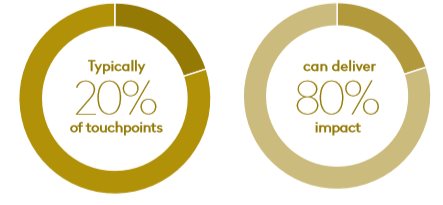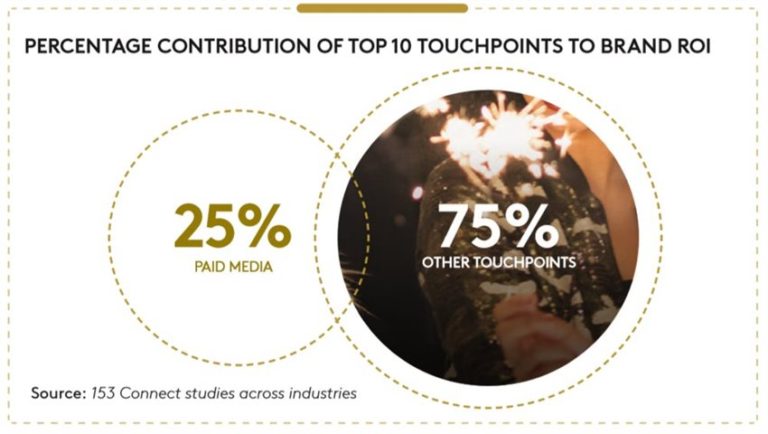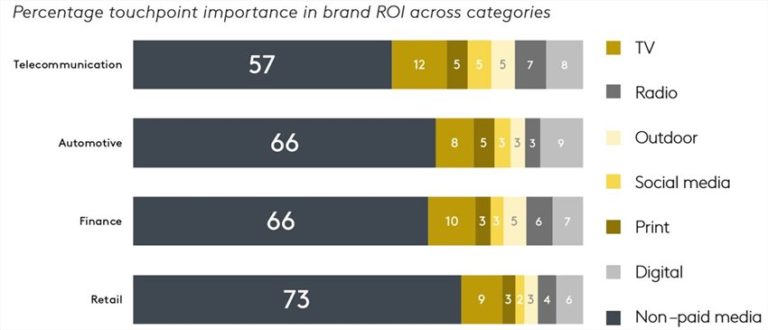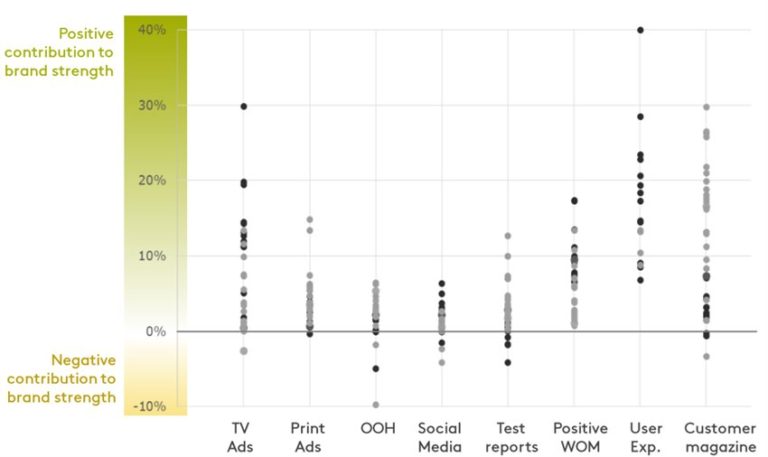Fuelled by technological innovation, there are multiple new ways for brands to communicate and interact with consumers. Every consumer experience has the potential to change their attitude and behaviour towards your brand and yet budgets and resources simply cannot cover all touchpoints.
This means it is more important than ever to pinpoint the moments that matter for your customers; to ensure your brand is confidently investing in touchpoints that will drive ROI.
Part one of the Power of Connection series from Kantar South Africa unpacks key learnings and insights across all media touchpoints in South Africa to provide marketers with a competitive edge in optimising media investment to help them #GetMediaRight. Brands are the sum of all experiences with a product. Paid media contributes, on average, 25% to overall ROI.
Ensuring your brand invests in the right paid for media touchpoints is key to unlocking future growth. The following insights are based on Kantar’s Connect Database, which looks at touchpoint contributions across hundreds of studies from various categories.
Marc Pritchard, CMO of Procter & Gamble (P&G) said that in an effort to keep up and be present at as many touchpoints as possible, the quality and consistency of communication suffered. ‘In this digital age we’re producing thousands of new ads, posts, tweets, every week, every month, every year. We eventually concluded all we were doing was adding to the noise.’
In addition, the pressure to make use of algorithms and other ‘shiny’ tools meant brand managers felt increasingly out of touch with their brands. ‘We relinquished too much control,’ said Pritchard. So how can brand managers get back in the driving seat and bring their brand up-to-speed?
To answer this question, Kantar analysed more than 270,000 touchpoint experiences in over 450 Connect touchpoint studies worldwide.
Three key strategies were identified that help brands find extraordinary growth:
- Do fewer things, but excellently
Brands have more ways than ever to reach consumers. However, to maximise ROI, brands should identify the key touchpoints that deliver the majority of brand impact, and learn from competitors to optimise these touchpoints.

Case study: coffee brands
To illustrate this point, we draw on a touchpoint study in the coffee category, with coffee drinkers aged 20 to 65 years. In this case study there were 43 touchpoints where consumers might potentially experience a brand, including traditional paid touchpoints (such as TV advertising), owned touchpoints (such as the shelf presence or website), as well as earned touchpoints (such as word of mouth). Analysis showed that the top 10 most impactful touchpoints contributed 81% of brand impact. The remaining 30 touchpoints had little or no impact in the category.

2. Find brand growth beyond paid media
Consumers interact with brands across many touchpoints outside of media, including touchpoints before, during and after purchase, paid media touchpoints, owned touchpoints and earned touchpoints. One of the amazing findings of our more than 150 Connect studies is that brand building is not a matter of paid media alone. Paid media only contributes 25% to the overall brand equity and yet, many companies are optimising their media performance only. By doing so, brands have a blind spot for all the other touchpoints that contribute 75% to the brand.

Connect your audience with relevant channels
Any well planned campaign starts with your target market, which is even more crucial when deploying multiple media channels. Get to know your audience, understand exactly who they are and what they’re looking for. Different media will reach different audience segments and produce different responses. You can improve your overall media performance by understanding your audience’s receptivity to each touchpoint in their journey to purchasing your product.
3. Leave a unique brand footprint
From case studies across South Africa, the importance of non-paid-for media touchpoints is irrefutable. Although this does vary by category, more than two-thirds of brand ROI is driven by non-media touchpoints. In retail, for example, non-media (elements such as store layout and in-store experience for example) contribute almost 20% more to brand ROI than telecommunications, so understanding category nuance is key in optimising media strategy.
What works in one category will not necessarily translate into another. Regardless of categories across paid media touchpoints, TV continues to dominate importance. When looking at the importance of social media platforms combined with other digital advertising, investment across the digital ecosystem will undoubtedly deliver brand ROI.

Not all touchpoints deliver the same impact across brands, thus understanding impact for your brand vs. key competitors are key in optimising future strategy.

Whilst it is key for media planners and strategists to ensure the most relevant touchpoints are included in a media plan, touchpoint selection alone will not automatically guarantee great brand ROI. The impact of touchpoints varies across brands. In the above graph, every dot represents one brand. For every one of these brands, their touchpoint experience has a different impact on overall brand ROI – it can be positive (green part of the Y-axis) or negative (yellow part of the Y-axis).
Looking on the left side: we see TV advertisements for some brands work really well, but for others, TV is not working at all. The same distribution can be observed across touchpoints. The key factor of determining the extent of a touchpoint’s contribution to overall brand ROI is the quality of the creative. Cut-through creative will result in higher touchpoint contribution, whereas poor-quality creative will, in some instances, result in negative brand ROI. It is the combination of relevant touchpoints and quality creative that determines whether or not the brand ROI is maximised.
Understanding the role of touchpoints and their synergies across the consumer journey helps you activate your brand strategy more accurately and effectively. Helps you to optimise investment across all consumer touchpoints including paid, owned and earned, particular when budget conversations come up.
Connect helps you manage touchpoints holistically across your brand and competitor brands to deliver the best ROI across your marketing budget. Connect can help streamline touchpoints to those that matter the most for your particular category/customer to ensure you’re getting maximum impact.
Study Information: Sample n=1000 category users. 35 min survey. Timeline from commission to strategic workshop delivery two months.






